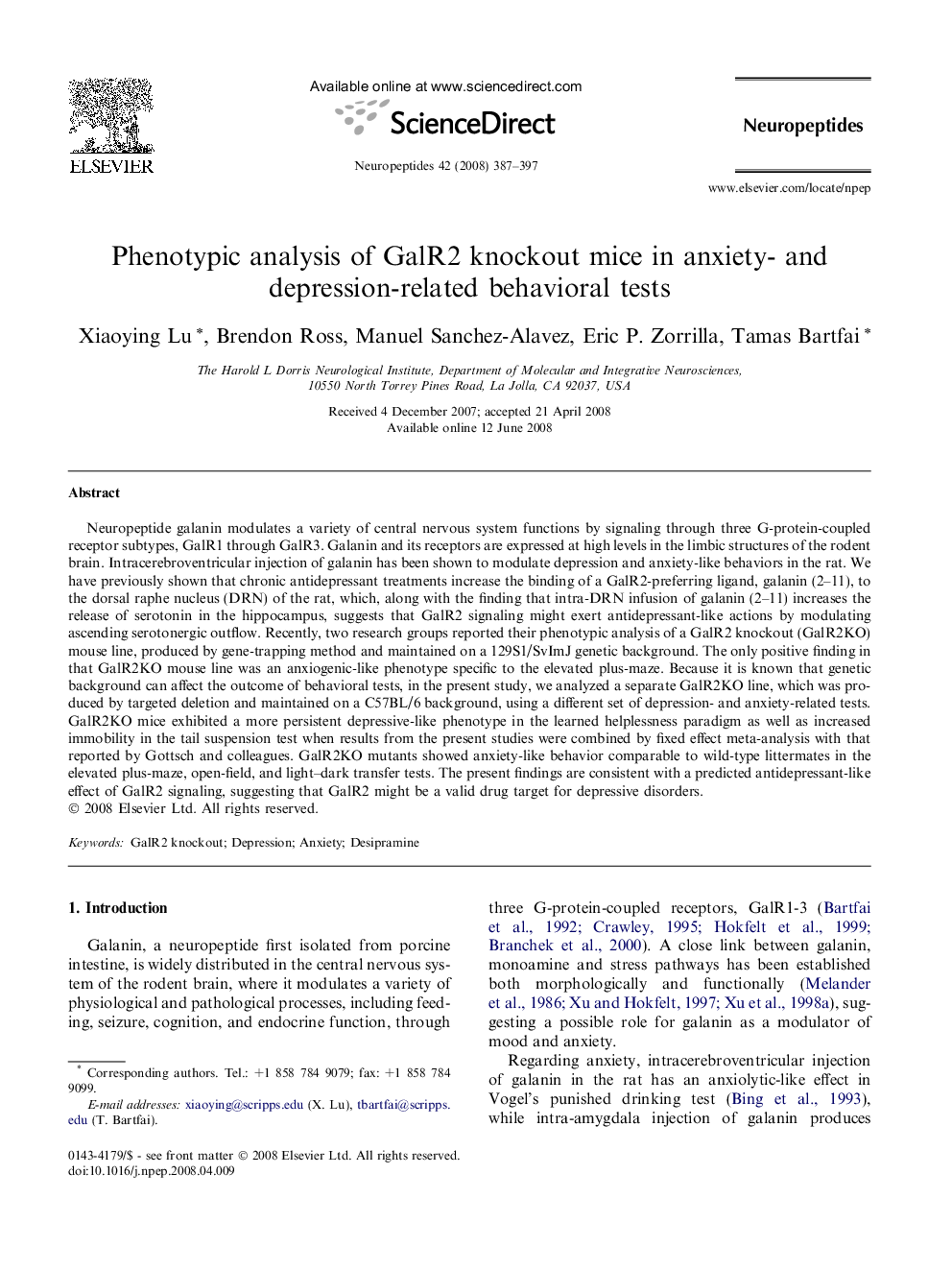| Article ID | Journal | Published Year | Pages | File Type |
|---|---|---|---|---|
| 2808271 | Neuropeptides | 2008 | 11 Pages |
Neuropeptide galanin modulates a variety of central nervous system functions by signaling through three G-protein-coupled receptor subtypes, GalR1 through GalR3. Galanin and its receptors are expressed at high levels in the limbic structures of the rodent brain. Intracerebroventricular injection of galanin has been shown to modulate depression and anxiety-like behaviors in the rat. We have previously shown that chronic antidepressant treatments increase the binding of a GalR2-preferring ligand, galanin (2–11), to the dorsal raphe nucleus (DRN) of the rat, which, along with the finding that intra-DRN infusion of galanin (2–11) increases the release of serotonin in the hippocampus, suggests that GalR2 signaling might exert antidepressant-like actions by modulating ascending serotonergic outflow. Recently, two research groups reported their phenotypic analysis of a GalR2 knockout (GalR2KO) mouse line, produced by gene-trapping method and maintained on a 129S1/SvImJ genetic background. The only positive finding in that GalR2KO mouse line was an anxiogenic-like phenotype specific to the elevated plus-maze. Because it is known that genetic background can affect the outcome of behavioral tests, in the present study, we analyzed a separate GalR2KO line, which was produced by targeted deletion and maintained on a C57BL/6 background, using a different set of depression- and anxiety-related tests. GalR2KO mice exhibited a more persistent depressive-like phenotype in the learned helplessness paradigm as well as increased immobility in the tail suspension test when results from the present studies were combined by fixed effect meta-analysis with that reported by Gottsch and colleagues. GalR2KO mutants showed anxiety-like behavior comparable to wild-type littermates in the elevated plus-maze, open-field, and light–dark transfer tests. The present findings are consistent with a predicted antidepressant-like effect of GalR2 signaling, suggesting that GalR2 might be a valid drug target for depressive disorders.
